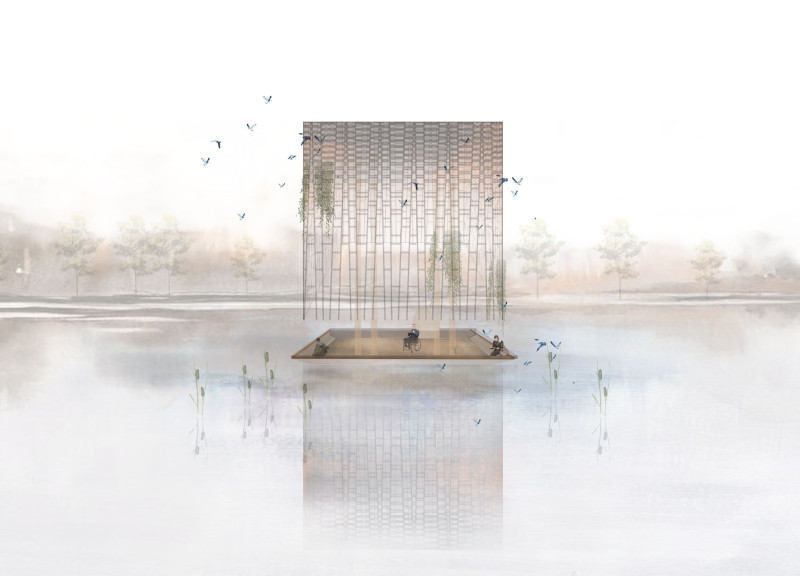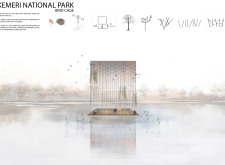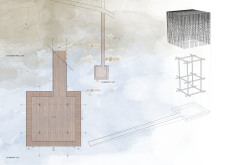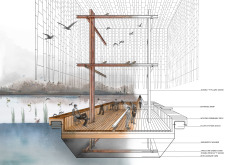5 key facts about this project
The structure is designed with sustainability in mind, using materials that blend into the natural landscape while also ensuring durability. The primary features include a pentagonal base, ramps for accessibility, and an observation deck that maximizes views without intruding upon the habitat of the birds. The project serves not just as a visitor center but as an exploration of ecological architecture.
Innovative Design Approaches
One of the distinguishing characteristics of the Bird Cage is its elevated design, which enhances the user experience by providing panoramic views of the wetlands. The observation deck is constructed primarily from glass, allowing for unobstructed lines of sight and creating a transparent barrier between visitors and the environment. This design choice reflects a commitment to maintaining the integrity of the natural surroundings while encouraging visitors to immerse themselves in the ecological landscape.
The integration of interactive features such as rainwater management systems and floating docks further sets this project apart from typical visitor centers. These elements do not merely serve practical functions; they encourage users to appreciate and understand the importance of water conservation in wetland ecosystems. The emphasis on ecological awareness through architectural design positions this project as a model for future developments in sensitive environmental contexts.
Technical Details and Materials
The structural integrity of the Bird Cage is achieved through the use of double T steel beams, which provide necessary support for the upper observation level. Additionally, wooden materials were selected for the deck and ramps, ensuring durability while offering a tactile, natural feel that complements the park’s aesthetic. The use of iron laminate for roofing contributes to the lightweight nature of the structure, reducing visual bulk and blending the built form into the landscape.
In terms of accessibility, the design includes carefully planned pathways and ramps, ensuring ease of movement for all visitors. This inclusive approach aligns with contemporary architectural standards, promoting universal access to nature.
For a comprehensive understanding of this project, readers are encouraged to explore the architectural plans, sections, and design details that highlight the thoughtful considerations behind its development. This design not only emphasizes ecological integrity but also serves as an educational platform for visitors, fostering appreciation for the natural world.


























